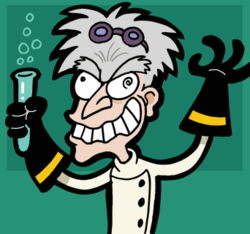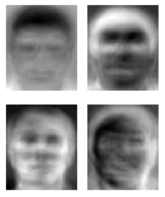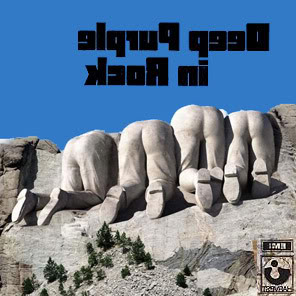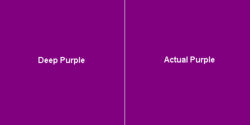Deep Purple
“Yeah Yeah Yeah, Space Trucking" - poetically, how can I compete with that?”
“Hush...”
“Way to fucking confuse us. To think this whole time we thought that song was about sex”
Deep Purple is an influential group of physicists whose scientific and musical prowess is legendary.
In their heyday in the 1960s and 1970s, the reclusive members of Deep Purple wore signature labcoats of deep purple whence they derived their name. Thereafter the band split to form Blue and Simply Red.
History[edit]
Theres little knowing how Deep Purple started, and theres little knowing and hope that they'll end. So lets skip all the less important stuff and get to the kinda maybe important stuff. Deep Purple was formed in 1967 when people smoked doobies and drank beer from a paper bag. It was there that little Richard Blackmore started the catastrophy that is Deep Purple. Some things happened, then some other things happened. Then the really weird things happened, and then we're back to other things happening.
They went through their first years with Frank Sinatra tribute singer Rod Evans. This at first didn't bother the rest of the band until Richie started getting "I Get a Kick Out of You" stuck in his head. It was later that week Rod got a kick out of Blackmore........ in the balls. There went Evans' singing voice and he left the band because of "artistic differences", or so he tells people to this day.
Things went on a down for a while but in the words of rock band Queen The Show Must Go On. Freddie Murcury wishes he would've held his breath. The band hired screamer Ian Gillan, who had recently done Jesus Christ Superstar. They recorded their first album together in 1970 called In Rock, which showed the band carved into Mount Rushmore. That same cover got selected to be in the "Most Cheesiest LPs in Popular Music". It really showed off the edgieness of Purple, with the creative lyrical style of Gillian. Who could forget "You pulled off your hair and took out your teeth, yeah yeah, I almost died of fright, Ye-ahhhhh" or "When I was seventeen, my momma said to me, be careful what you touch, you shouldn't touch muuuuuuuuccchhh, blew my mind, she was so kind, I could've crieeedddd, yea" et cetera.
Then in 1971 they recorded Fireball, dedicated to the many manifests of STDs under Gillian's belt at the time. The doctors diagnosed it was Clymiderpaborhea, which was later known as Britney Spears' Unfortunate Boyfriend, or BSUB. The band decided to take a different approach with some country and western styles of music as featured in Anyone's Daughter, which is specifically dedicated to the people of the Ozarks, as mentioned in the liner notes. Another favorite is No One Came, which is talking about Robin Hood and white suits of some sort. Scientists are still looking for the meaning of that one.
In the cuming of 1972, the Purples went to Switzerland to record their 3rd album Machine Head. The only problem with that is that there was some dude at the sessions named Your Dad. And Your Dad had one too many snorts and decided to masturbate in the open, and during the climax Your Dad forgot he had gonhorhea from his wife named Your Mom, and sets off a stream of fire and shoots straight up to the ceiling and burns the place to the ground. Then the group had to record their album in the alley way behind Sticky Tits Rib Joint and Strip Club. When the album was released, they thought it was going to be a failure, which was the smartest assumption Deep Purple made in their whole carreer. But fortunately music buyers aren't smart and the album was a success. The fame didn't last long and Deep Purple recorded one last album before they split up.
History Epilogue[edit]
But then they got back together with rocker David Coverdale. The band thought that because of the inhuman size of Coverdales crotch areas, that they would attract more women, and then they'd fullfill their dreams......... getting laid. But that part of the bands horrible histroy isn't important, and that concludes the story of Deep Purple.
Principal achievements[edit]
Smoke on the Water[edit]
Physicists by training, the tuneful group members spent the prime of their professional careers researching, recording and (due to recurring technical problems) re-recording their signature song "Smoke on the Water". This song, part of their magma opus The Colour Purple, is about how the subnuclear properties of Heavy Water change when Heavy Metal is added. Because of the song's far-ranging geothermal applications, the group was nominated twice for the Nobel Peace Prize in Physics.
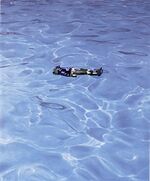
Numerous locations were used for recording this famous track: Montreux (difficult because no-one spoke French), the Lake Geneva shoreline (also difficult to avoid getting amplifiers wet), Frank Zappa's Mother's house (not really a recording studio, but they tried anyway), the gamblin' house (the machines were too lousy), Funky Claude's (everything was on fire and kids were dragging themselves everywhere) and then finally the Grande Hotel. By this stage Deep Purple had actually given up, and had decided to get into the hospitality business. To pass the time between changing the sheets and preparing English breakfasts for customers, they recorded a few songs.
The introduction riff is extremely well-known, and is a must-learn for all new guitarists. In a guitar store, a guaranteed way to get a discount on a new guitar and make friends with the staff is to sit down and try to learn the riff. Here are a few tips to make sure that you play it right:
- Get the right guitar - those Gibson Les Pauls that are hanging up really high are up there for a reason. No-one wants them anymore. Grab one that has a nice yellowy look to it - sort of like the sun rising at daybreak.
- Crank up the distortion. Unless you really have a feedback-laden, ear-piercing trebly sound, you're never going to be able to reproduce what Ritchie Blackmore did. Get that Gain knob and turn it up to 12 (BEAT THAT SPINAL TAP!!!).
- The best amps at the moment are Mesa Boogie Triple Rectifiers - Dream Theater and Linkin' Park use them so they must be cool.
- The first time the riff is played is on the guitar. After the second time the organ comes in to give it a bigger sound, and the cymbals give it a little rhythm.
- On the fourth repetition of the intro riff, the drums enter, and then the bass enters on the fifth repetition. To get the same sound, make sure that you use 5ths like so:
E ------------------------------------------------------------------------------ B ------------------------------------------------------------------------------ G -------3---5--------------3---6---5---------------3---5---3------------------- D ---5---3---5---------5----3---6---5----------5----3---5---3----5-------------- A ---5---------pause---5---------------pause---5-----------------5-------------- E -------------pause-------------------pause------------------------------------
- Make sure you only PLUCK the strings with two fingers.
- Always learn these riffs standing up. Between each attempt, look vaguely around and ask people if it sounds right. Do not take into consideration too much what they say, because you're really after your own sound.
- Hunt down Steve Morse or Ritchie Blackmore at a guitar clinic and ask them how to play the riff. They'll be happy to help out. Or try posting a message on their forum.
Purple Haze[edit]
The group pioneered the use of purple haze in experimental songwriting, culminating in the Purple Haze Concerto which was the first time that a symphony orchestra and a rock band played together. Thus, the new genre Heavy Classical came into being.
Deep Purple In Rock[edit]
Following on from their experiments with purple matter, the group decided to started to probe the secrets of alchemy. Turning gooses into gold was their primary concern, but all they could do was turn themselves into rock. While this had a slightly less fortuitous payout, they still released photos of themselves "in rock", but critics were less than pleased. One of their more famous performances, in Japan in 1973, showcased their abilities to turn to stone at will. The downside to this, of course, was that they were quite unable to play their instruments. John Kage applauded this performance calling it "a moment of genius". No one really noticed and he was beaten up afterwards.
Rupture of the Deep[edit]
Deep Purple continue from strength to strength with their latest release "Rupture of the Deep". With its subject matter of ruptures, deep things and other deep purple ruptures, they continue to produce shock and awe to their huge fanbase. At last measurement, the fan was about 20 metres high, which is pretty high, and therefore the base had to be something like 30 metres wide to ensure that the thing didn't fall over. It's getting almost as big as those power-generating windmill Don Quixote type things, which is pretty awesome.
Other achievements[edit]
In 1988 the band introduced a benchmarking scheme to which other heavy rock bands can apply, generally known as "Investors in Purple". Deep Purple have also won numerous awards:
- Most dignified "but a bit sad" rockers from the 70's
- Longest running schism with founding member - Ritchie Blackmoore/Deep Purple (shared award)
- The "Rock band able to make the most money, while still sounding good plus being really really old Award"
- Band with the biggest generation gap awarded to Steve Morse
- Most likely to have heart-attack on stage - awarded to Ian Paice
- Only rock band apart from Pink Floyd to sound alright with a keyboard player.
- The entirety of the AAAAAAAAA! article is actually based on the vocal performance of Ian Gillan in live versions of "Strange kind of Woman".
In 1998, to promote their album, Abandon, the band played chess against the chess playing computer Deep Blue. After playing for 17 hours, Deep Purple, in an amazing bit of teamwork, defeated the computer by convincing it to look the other way, and turning the board around when it wasn't looking.
But they still can't beat computer solitaire.
Yet, despite all these colourful achievements, they are still known as "that band from the 70s that wasn't Led Zeppelin".
Donny and Marie Osmond recorded a tribute song to this band called, what else, "Deep Purple".
Confusion[edit]
Deep Purple has often been known to be confused with the standard colour purple. Once the difference has been shown and noted (see diagram), most people do not make this laughable mistake twice. Only brain-dead simpletons confuse purple with Deep Purple; however, most brain-dead simpletons are able to distinguish the number of matches thrown on the ground, which more than makes up for their inability to distinguish between purple and Deep Purple.
Deep Purple laboratory equipment and supplies[edit]
To purchase Deep Purple records and other Deep Purple items, head to http://www.leefilters.com/LPFD.asp?PageID=180
Ian Gillian (You Mean That Twat From Jesus Christ Superstar???)[edit]
It was in fact John "Ozzy" Osbourne that founded Deep Purple. It's just that he was too drunk at the time to remember. The "Concerto for Group and Orchestra", with Jon Lord, really came about because all the boys were stoned and walked in to the wrong concert. "Made in Japan" refers to the maker of the holes in the record of their famous bootleg album “Deep Purple in Concert with Scooby Doo and Shaggy”. Eric Clapton declined to play lead guitar with them until they gave him his ball back. Further rifts between John Paul Jones, John Paul Sarte and John Lord created a 3 way split which invented Hard Rock, Heavy Metal and Philosophy. Which can be refuted if "I think therefore I can" as Ritchie once put it, so "fuck you".
Gillan has recently begun supplementing his income by starring as current companion Aimee Mann in Doctor Who.
Back Catalog[edit]
1968: Deep Purple Exploring Their Shades
1969: Deep Purple Reading Books
1969: We Went a Little Too Deep On the Purple For Our Last Album, So Here's Our New Album A Lighter Deep Purple
1970: Deep Purple In Rock
1971: Deep Purple on Fire
1972: Deep Purple Getting Head from Machines
1973: Deep Purple Questioning Their Identity
1974: Deep Purple On Fire Pt. II
1974: Deep Purple Weathering The Storms
1975: Deep Purple In Wine
1984: Deep Purple are Perfect Strangers (as nobody remembers them from last time)
1987: Deep Purple Building A House...With A Blue Light
1990: Deep Purple in Slavery and their Deep Purple Masters
1993: Deep Purple Fighting A Battle Against Bitchy Blackmore...Who Rages On
1996: Deep Purple Making Puns
1998: Deep Purple Abandoning Their Organist (Who Once Had A Pretty Cool Moustache) After This Album
2003: Deep Purple Eating Bananas
2005: Deep Purple Rapturing Deep Inside the Anuses of their Listeners
2013: Deep Purple Questioning The Future
2017: Deep Purple goes to infinity
